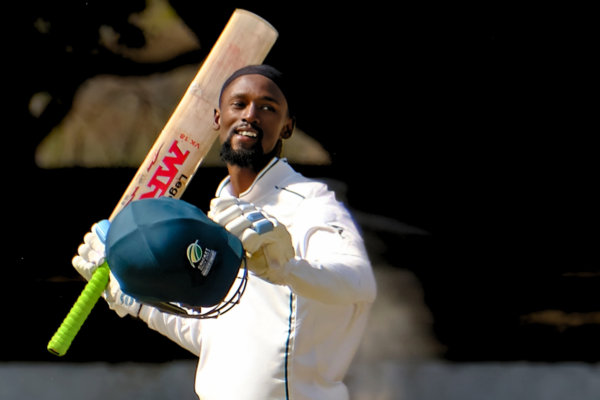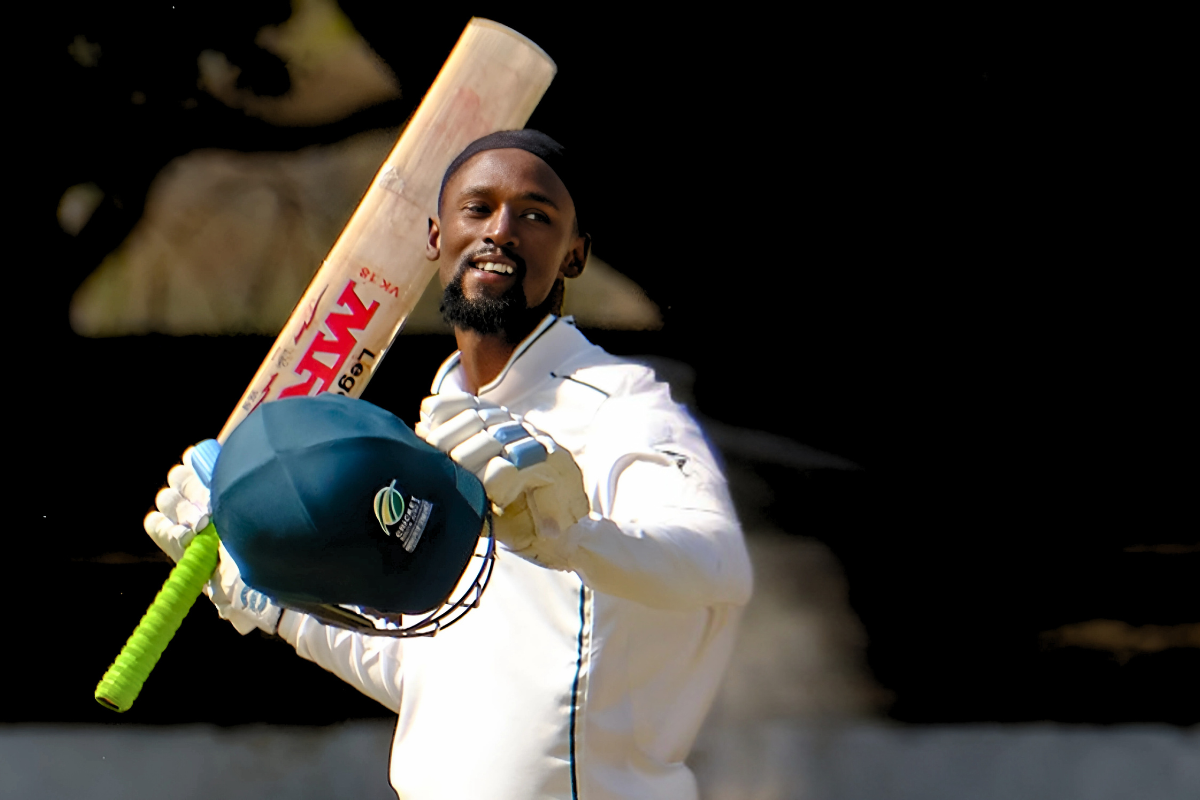

Glance through the recently announced South Africa Test squad and it’s very likely that you might pause at one name to take a second look. Amidst the likes of Dewald Brevis and Lhuan-dre Pretorius, hyped up in IPL colours with fanciful six-hitting skills in their arsenal, is Lesego Senokwane.
A first-class career average of 31.46 is almost never enough to win you a place in the Test squad in most countries. If your first instinct then is to link his colour and that batting average, you should hold onto that thought, at least till you get the full picture.
Senokwane’s inclusion in South Africa’s Test squad for the Zimbabwe series is significant in more ways than one. On the surface, it rewards a batter who was the Knights’ highest run-scorer in the 2024-25 domestic four-day season, tallying 559 runs at 55.90, including two centuries and a highest score of 205. But beneath the numbers, Senokwane’s call-up represents a deeper, overdue shift in South African cricket: the development and recognition of a black African batter.
While debates continue over his career averages and perceived lack of ‘big-name’ pedigree, Lesego Senokwane stands at the intersection of transformation policy, historical imbalance, and on-field merit, a rare case where all three align.
In more than three decades since South Africa’s return to international cricket, only one black African batter, Temba Bavuma, has consistently held a place in the Test XI. That he was made an all-format captain, rather controversially, at one point tells you how significant Bavuma’s development was for Cricket South Africa.
The Bavuma example speaks to more than selection preferences; it’s a reflection of the systemic challenges facing black African batters in a country still shaped by economic and racial disparity.
As Hashim Amla put it in The Cricket Monthly a few years back, the development curve for a batter is steep and early: “Most top bowlers don’t necessarily have to go to a top cricketing school… whereas in batting, you have got to have the good coaching and then the upbringing of batting.” Most Black African cricketers who step up into top level cricket are then naturally bowlers – the Ntinis, the Rabadas and lately the Maphakas of South African cricket.
Access to coaching, gear, nutrition, and elite match experience, all crucial to producing quality batters, has historically been out of reach for many talented black African children. And even when players emerge, they often carry the burden of being labelled “quota picks”, a pressure that can affect performance, confidence, and longevity. Batting, unlike bowling, doesn’t offer the luxury of a bad spell followed by a second spell.
Senokwane’s career progression offers a compelling view into CSA’s evolving transformation strategies. That policy, introduced in 2017-18, mandated that within the three required black African players in each franchise team, at least two had to bat in the top six. The lack of trust in black cricketers often meant that they were pushed to face the new ball, almost like the expendable opener strategy that is largely adopted in T20 cricket.
It’s no surprise, then, that Senokwane, originally a middle-order batter and part-time spinner, was transitioned into an opener. But, in his case, far from being exposed, Lesego Senokwane thrived. He began turning starts into big scores and now walks into the national setup as the highest-ranked black African batter in the 2024–25 CSA 4-day season. That he made it work despite the challenge of facing the new ball in South Africa, arguably the toughest place in the world to open, is a credit to his skill.
There will be critics who look at Senokwane’s career numbers and ask: is this a justified Test call-up? But those questions miss the point. CSA’s selectors haven’t merely looked at one good season and rewarded it. They’ve acknowledged the significance of nurturing and backing a player who represents a solution to one of the longest-standing developmental failures in South African cricket.
“I’ve known Lesego for a few years now as well,” said Proteas head coach Shukri Conrad. His form took a slight dip, but that’s pretty natural. But if you look at his form in the last two years in first-class cricket, right up there, it’s always nice to be able to have young opening bats.
“So, as much as you want to build your reserves in the bowling department, you also want to build your reserves in the batting department. So, someone like Lesego has done particularly well, plays the short ball really well. And yeah, he’s been a real journeyman in our first-class game, and his performances definitely warrant his selection.”
Tony de Zorzi, another black African batter in the current Test squad, has already been given a decent run across multiple formats. He has shown glimpses of potential but hasn’t quite cemented his place. The pressure to succeed is steep, especially for black African batters under the weight of transformation discourse.
And, again, neither of these picks are random. De Zorzi was the captain of the U19 World Cup team in 2016. He showed impressive temperament at domestic levels to earn the graduation. Likewise, Senokwane’s numbers justify his inclusion. He has 1014 runs in his last two first-class seasons (455 in 2023/24 and 559 in 2024-25) while averaging 46.09. Last year, against a Zimbabwe Emerging side, he hit 280 in a total of 595. Unluckily that wouldn’t go down in his first-class numbers, but South Africa have taken note. They realise that, at 24, he’s entering a potential breakout phase. This isn’t a one-season wonder but a player who’s steadily developed over five years.
And the selection has come with timing in mind. With senior players rested, a non-WTC series, and a lower-pressure environment in Zimbabwe, the conditions are perfect for giving Senokwane a taste of the international level. As Shukri Conrad said, the tour is about building depth, and part of that is investing in players whose long-term success could redefine the face of the Test team.
ALSO READ:
Senokwane’s inclusion is not a compromise. It’s a culmination – of his domestic performance, of years spent correcting structural imbalances, and of CSA’s growing understanding that diversity in cricket must include batting at the highest level. For a long time, transformation has come easier in the bowling department. Now, at last, the scales are beginning to tip.
This isn’t about creating the next Bavuma. It’s about ensuring he isn’t the last. And if Lesego Senokwane can convert that chance into a solid innings in Bulawayo, it might just spark the next chapter in a long-overdue story for South African cricket.
With helpful inputs from Werner Erasmus (@Werries_/Twitter)
For more updates, follow CricXtasy on Facebook, Instagram, Twitter, Telegram, and YouTube.